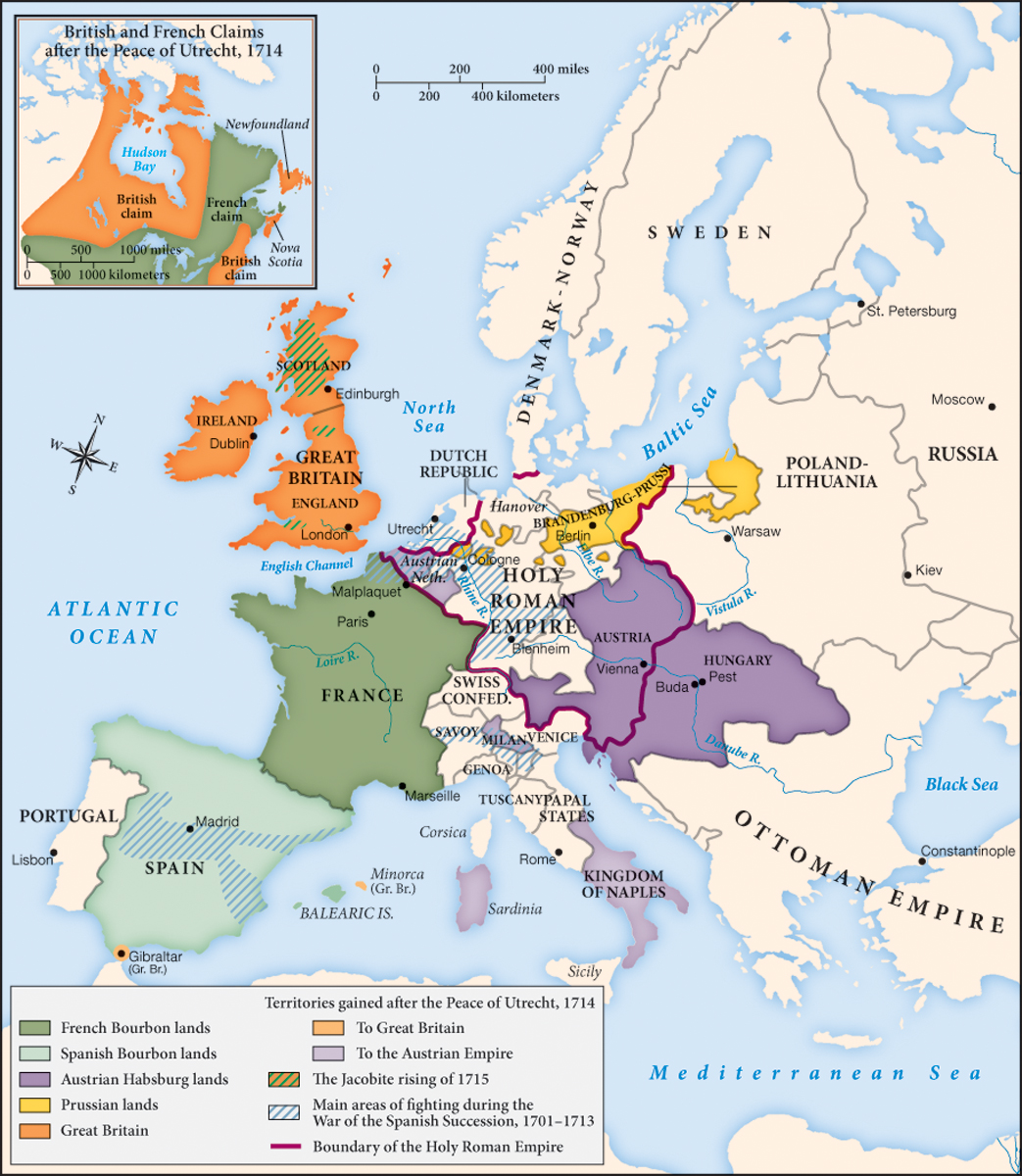A New Power Alignment
Printed Page 556
Important EventsA New Power Alignment
The peace treaties that ended the War of the Spanish Succession (1701–1713) signaled a new alignment of power in western Europe (see Chapter 16). Spain began a long decline, French ambitions for dominance were thwarted, and Great Britain emerged as the new center in the balance of power. A coalition led by Britain and joined by most of the European powers had confronted Louis XIV’s French forces across Europe. The conflict extended to the Caribbean and North and South America as well. The casualties mounted inexorably: in the battle of Blenheim in southern Germany in 1704, 108,000 soldiers fought and 33,000 were killed or wounded—in just one day. At Malplaquet, near the northern French border, a great battle in 1709 engaged 166,000 soldiers and cavalrymen, and 36,000 of them were killed or wounded. Those allied against Louis won at Malplaquet, but they lost twice as many men as the French did and could not pursue their advantage. Everyone rejoiced when peace came (Map 17.2).

By the terms of the peace, French king Louis XIV’s grandson was confirmed as King Philip V of Spain (r. 1700–1746) but only on the condition that he renounce any claim to the French throne. None of the other powers could countenance a joint French-Spanish monarchy. Philip opened Spain further to the rest of Europe and stabilized the currency, but he could not revive Spain’s military prestige or commercial position. Spain consistently imported more from Britain and France than it exported to them. As a country that had been created by a campaign against Muslims within its boundaries, Spain remained firmly in the grip of the Catholic clergy, which insisted on the censorship of dissident or heretical ideas. Although the capital city, Madrid, had 200,000 inhabitants, laws prohibited people from smoking, reading newspapers, or talking politics in the cafés and inns of the city—precisely the activities flourishing in England, France, and the Dutch Republic.
When Louis XIV died in 1715, his five-year-old great-grandson succeeded him as Louis XV (r. 1715–1774), with the duke of Orléans (1674–1723), nephew of the dead king, serving as regent for the young boy. To raise much-needed funds, in 1719 the regent encouraged the Scottish financier John Law to set up an official trading company for North America and a state bank that issued paper money and stock (without which trade depended on the available supply of gold and silver). The bank was supposed to offer lower interest rates to the state, thus cutting the cost of financing the government’s debts. The value of the stock rose rapidly in a frenzy of speculation, only to crash a few months later. France finally achieved a measure of financial stability under the leadership of Cardinal Hercule de Fleury (1653–1743), the most powerful member of the government after the death of the regent. Colonial trade boomed. Peace and the acceptance of limits on territorial expansion inaugurated a century of French prosperity.